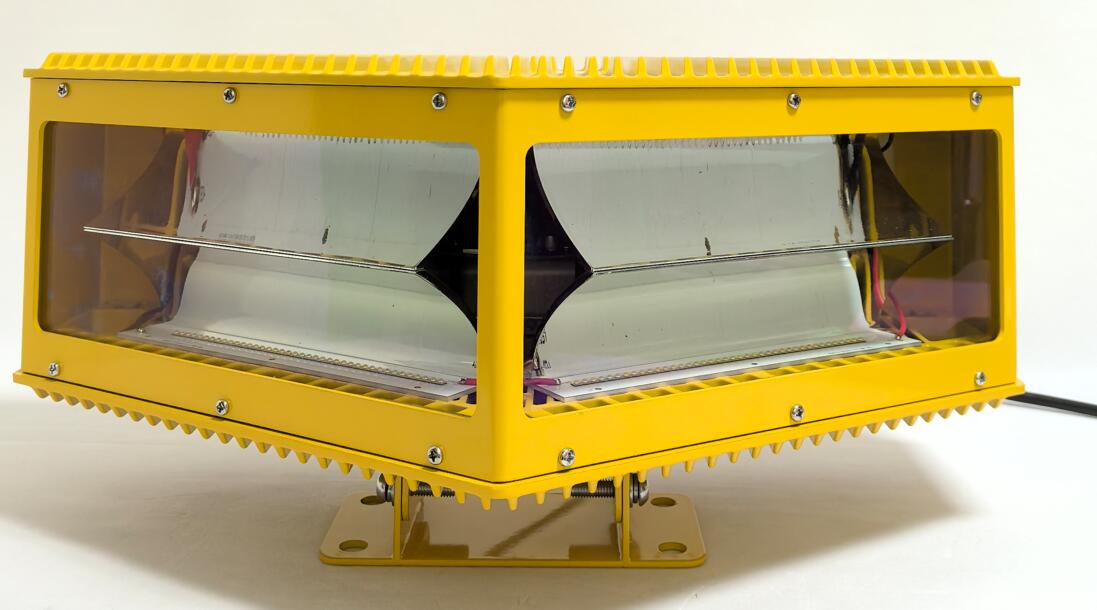Chimney Aviation Warning Lights: Essential Guardians of Industrial Airspace Safety
In our vertically expanding world, industrial chimneys and exhaust stacks present unique challenges to aviation safety. Chimney aviation warning lights serve as critical safeguards, preventing collisions between aircraft and these towering structures. This article examines the vital role, operational principles, regulatory requirements, and technological innovations of these specialized lighting systems that protect both aviation infrastructure and human lives.
The Critical Need for Chimney Aviation Warning Lights
Industrial chimneys – found at power plants, refineries, and manufacturing facilities – often extend hundreds of feet into the airspace. Without proper marking, these structures create significant hazards for:
Low-flying aircraft (helicopters, crop dusters, emergency medical flights)
Approaching/departing planes near airports
Modern drone operations in industrial corridors
Chimney aviation warning lights provide 24/7 visual identification through:

High-intensity illumination for nighttime visibility
Daylight-recognizable strobe characteristics
| chimney aviation warning lights |
Fail-safe redundancy systems for maximum reliability
Technical Specifications and Operational Standards
Modern chimney aviation warning lights incorporate several key components:
LED Light Heads - Energy-efficient, long-lasting illumination sources
| chimney aviation warning light |
Dual-Lighting Systems - Combining steady red lights with white strobes
Photocell Sensors - Automatic brightness adjustment based on ambient light
Lightning Protection - Critical for exposed tall structures
Monitoring Systems - Remote status alerts for maintenance crews
International regulations governing these systems include:
ICAO Annex 14 (International Civil Aviation Organization standards)
FAA AC 70/7460-1L (U.S. Federal Aviation Administration requirements)
ENAC (Italy) and DGAC (France) European aviation directives
CASA (Australia) and Transport Canada guidelines
Compliance depends on chimney height, location relative to flight paths, and surrounding terrain.
Innovations in Chimney Warning Light Technology
The industry has seen significant advancements:
Solar-Powered Systems - Eliminating wiring challenges on remote stacks
Wireless Monitoring - IoT-enabled performance tracking
Aircraft Detection Systems - Radar-activated lighting to reduce light pollution
Improved LED Optics - Enhanced visibility with lower power consumption
Durable Coatings - Resistant to extreme heat and chemical exposure
These innovations help industrial facilities meet stricter environmental regulations while maintaining aviation safety standards.
Installation and Maintenance Best Practices
Proper implementation of chimney aviation warning lights requires:
Structural Analysis - Ensuring proper weight distribution and wind resistance
Zoning Compliance - Meeting local aviation authority requirements
Corrosion Protection - Specialized materials for harsh industrial environments
Redundant Power - Backup systems for critical applications
Regular Inspections - Scheduled maintenance to prevent system failures
Case studies show that proper lighting reduces near-miss incidents by over 80% in industrial flight corridors.
Future Trends in Aviation Warning Systems
Emerging technologies will transform chimney aviation warning lights:
AI-Powered Predictive Maintenance - Anticipating failures before they occur
Integrated Drone Detection - Additional protection for low-altitude airspace
Advanced Materials - Lighter, more durable components
Smart City Integration - Coordinating with urban air mobility systems
As airspace becomes more crowded, these systems will evolve from passive markers to active safety participants.
Chimney aviation warning lights represent a crucial intersection of industrial operations and aviation safety. By combining regulatory compliance with cutting-edge technology, these systems prevent tragedies while allowing industrial facilities to operate without restricting vital airspace. As both industries continue to evolve, the importance of reliable, high-performance warning lights will only increase – ensuring safe skies for all airspace users while supporting essential industrial activities. Their continued innovation serves as a testament to engineering's role in creating harmony between ground-based infrastructure and aerial navigation.
